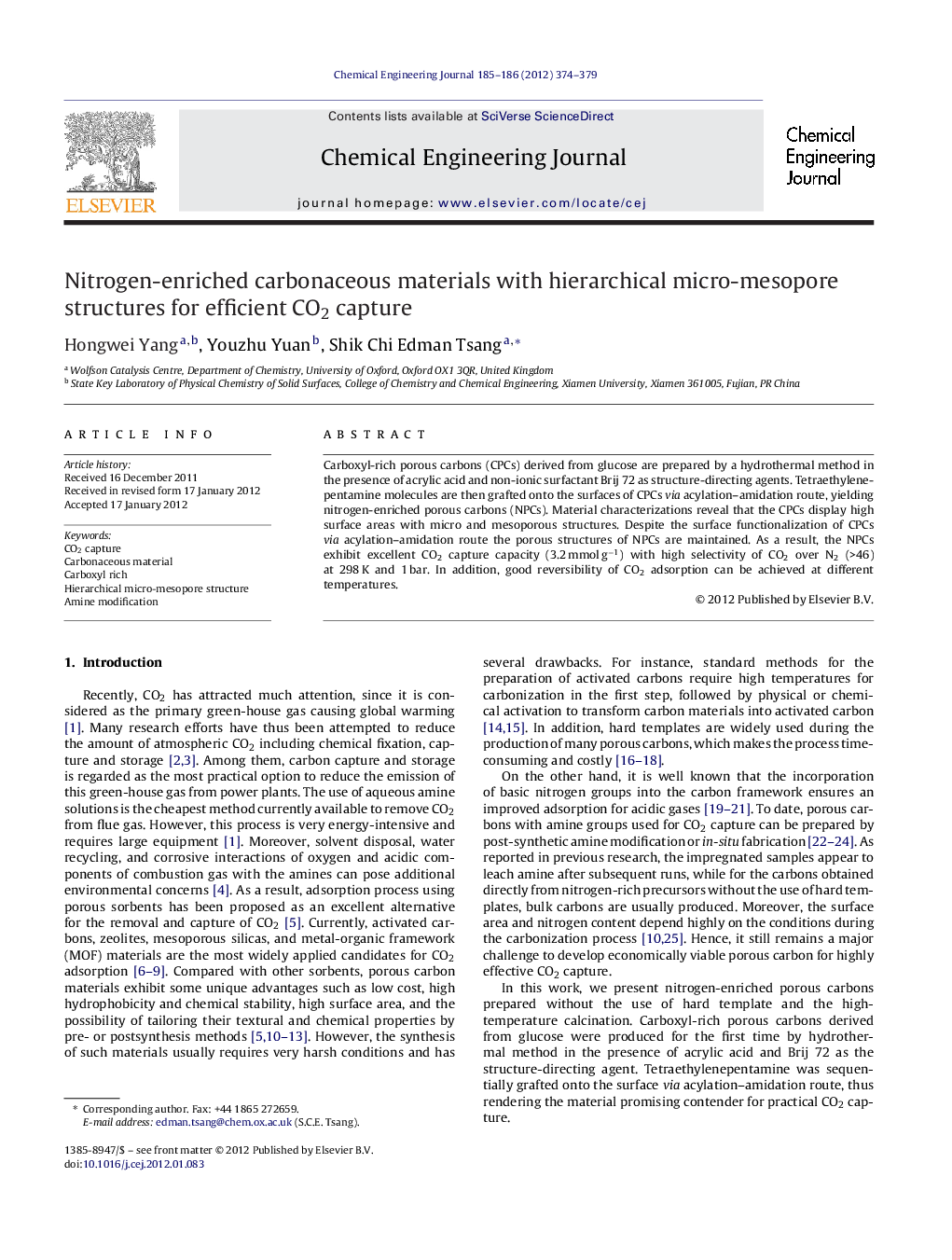| Article ID | Journal | Published Year | Pages | File Type |
|---|---|---|---|---|
| 150171 | Chemical Engineering Journal | 2012 | 6 Pages |
Carboxyl-rich porous carbons (CPCs) derived from glucose are prepared by a hydrothermal method in the presence of acrylic acid and non-ionic surfactant Brij 72 as structure-directing agents. Tetraethylenepentamine molecules are then grafted onto the surfaces of CPCs via acylation–amidation route, yielding nitrogen-enriched porous carbons (NPCs). Material characterizations reveal that the CPCs display high surface areas with micro and mesoporous structures. Despite the surface functionalization of CPCs via acylation–amidation route the porous structures of NPCs are maintained. As a result, the NPCs exhibit excellent CO2 capture capacity (3.2 mmol g−1) with high selectivity of CO2 over N2 (>46) at 298 K and 1 bar. In addition, good reversibility of CO2 adsorption can be achieved at different temperatures.
Graphical abstract.Figure optionsDownload full-size imageDownload as PowerPoint slideHighlights► Carboxyl-rich porous carbons derived from glucose are prepared for the first time. ► Nitrogen-enriched porous carbons are synthesized via acylation–amidation route. ► NPC10 exhibits superior CO2 capture performances at 298–373 K and 1 bar. ► Hierarchical micro-mesopore structure and amine-rich inner surfaces eventually result in the high performance.
